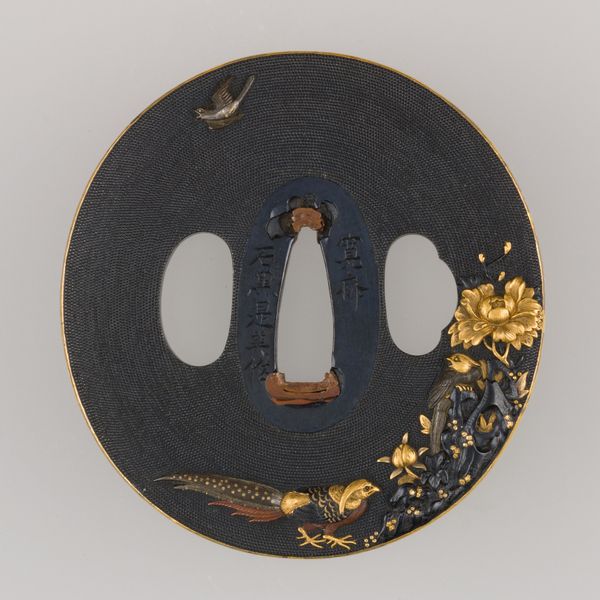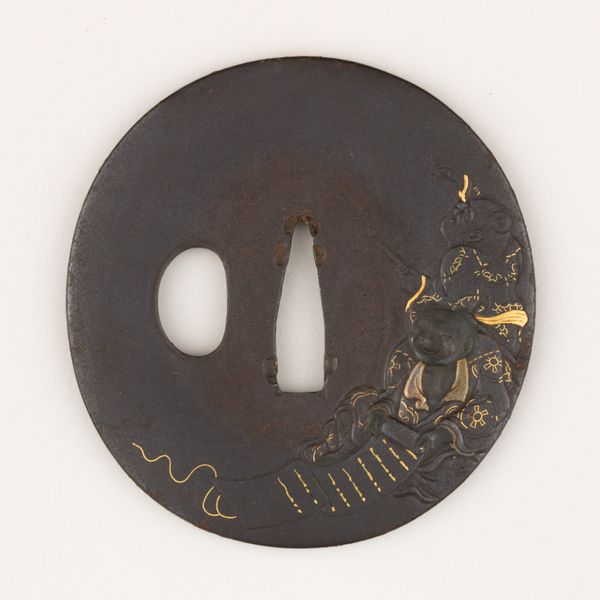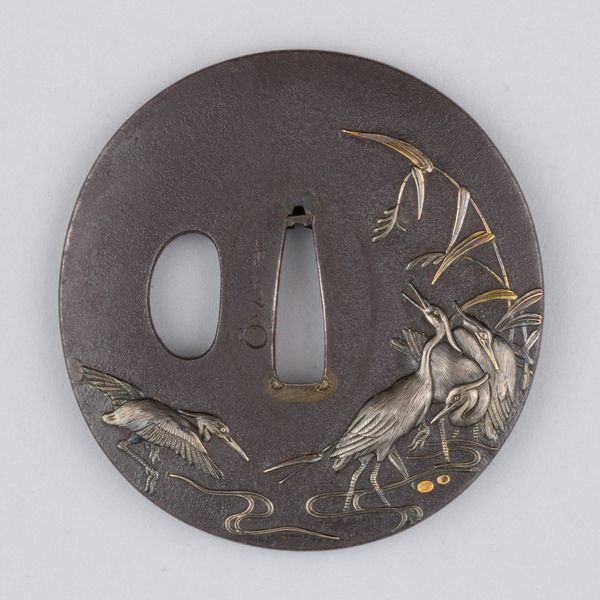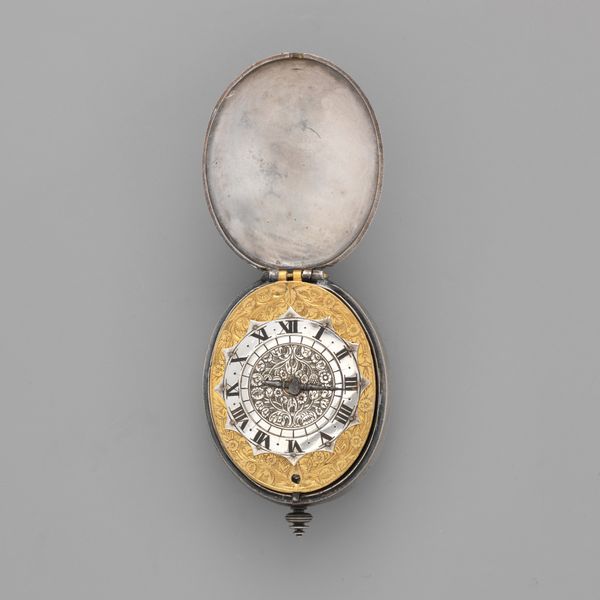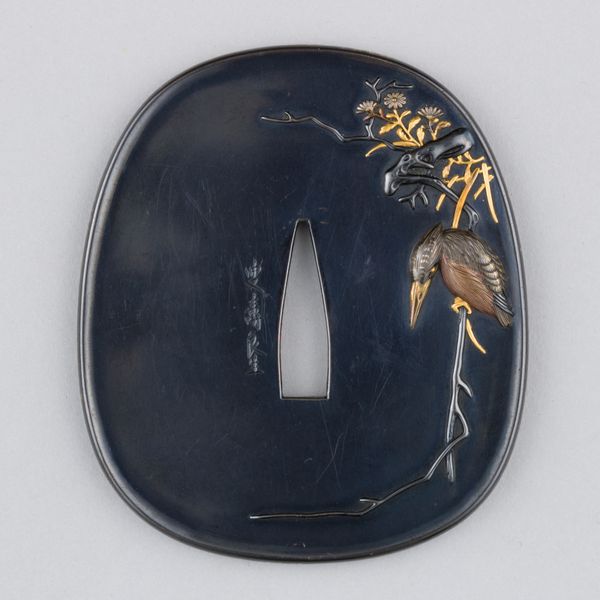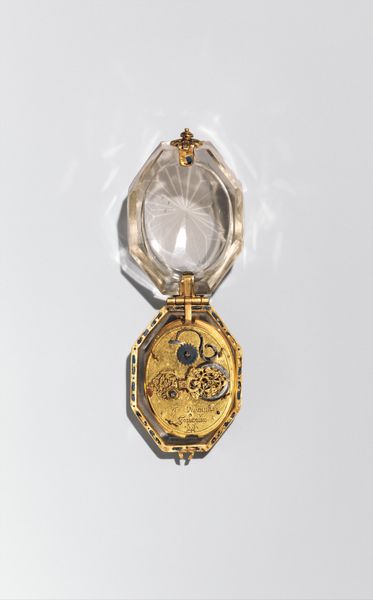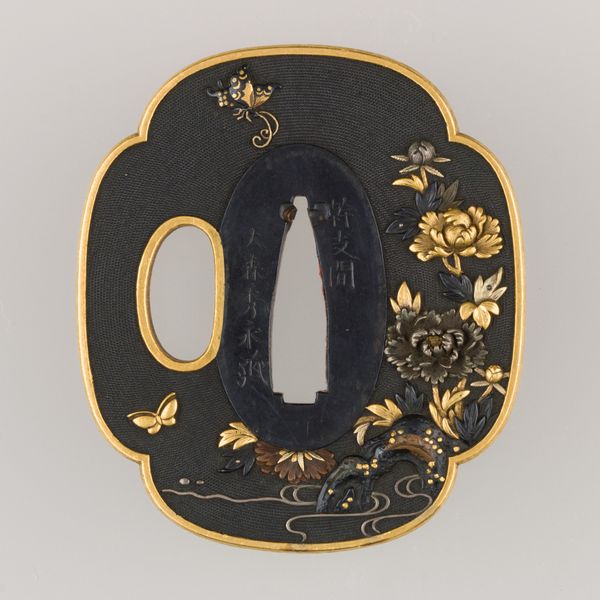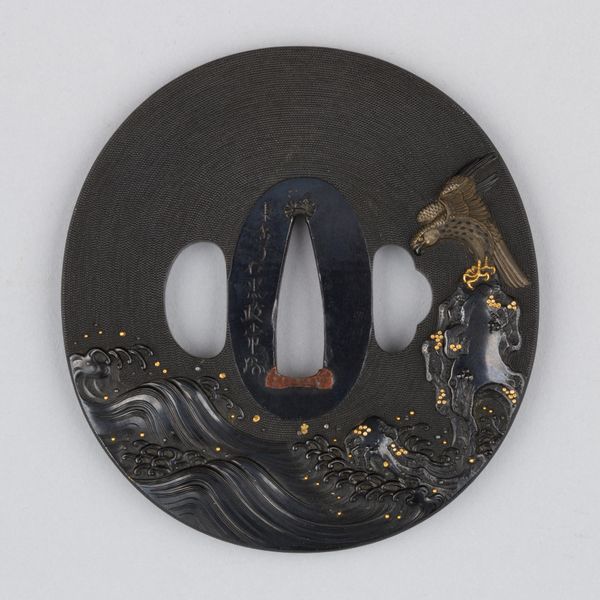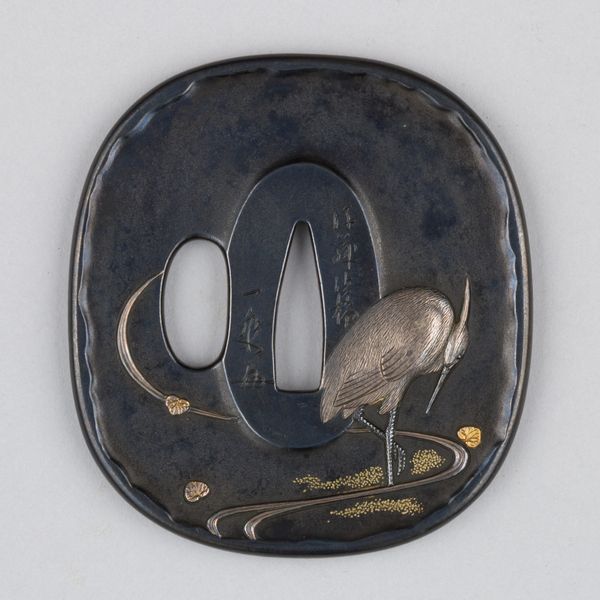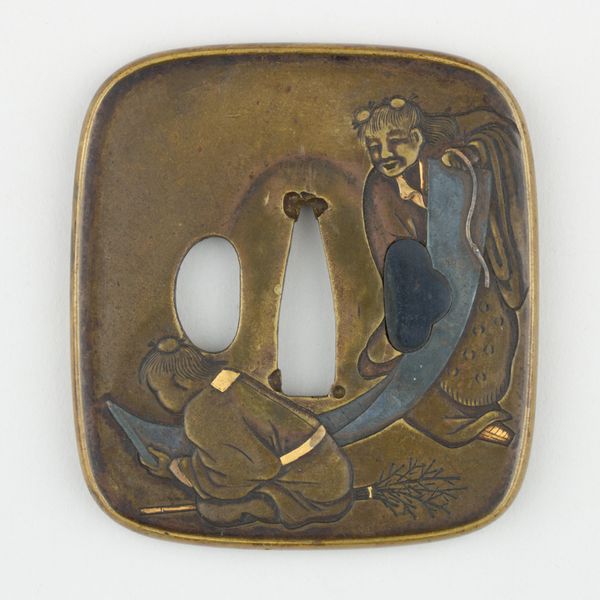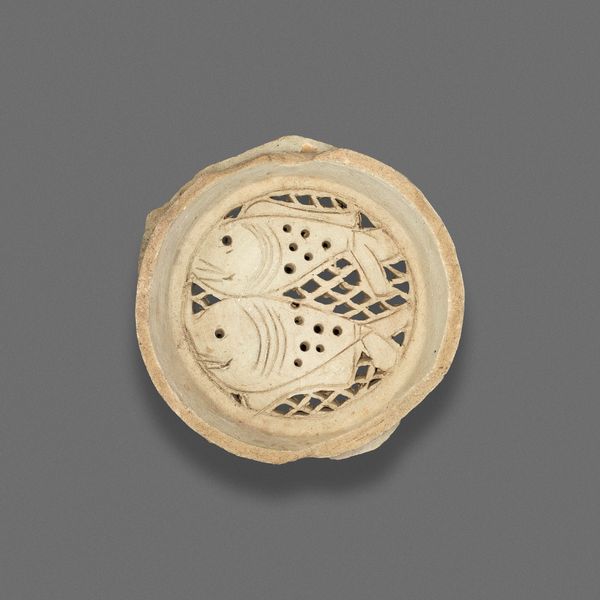
metal
#
metal
#
asian-art
#
japan
#
armor
#
sword
Dimensions: H. 3 1/8 in. (7.9 cm); W. 3 in. (7.6 cm); thickness 3/16 in. (0.5 cm); Wt. 4.4 oz. (124.7 g)
Copyright: Public Domain
This iron sword guard was made by Nobuiye Myōchin, a Japanese artist, around the sixteenth century. The sword, and therefore its guard, had a special place in Japanese society. It was not only a weapon, but also a symbol of power and status, particularly for the samurai warrior class. In Japan's feudal system, swords were carefully regulated, and their quality and ornamentation reflected the owner's position in society. The designs on sword guards, or tsuba, often carried symbolic meanings, referencing nature, mythology, or historical events. This sword guard is an example of the intricate craftsmanship and attention to detail that characterized Japanese metalworking during this period. The maker’s mark and the motifs provide valuable insight into the cultural values and artistic practices of feudal Japan. To fully appreciate this object, a historian might research the social hierarchy of feudal Japan, the symbolism of Japanese art, and the history of metalworking techniques. The meaning of art always depends on its social and institutional context.
Comments
No comments
Be the first to comment and join the conversation on the ultimate creative platform.

